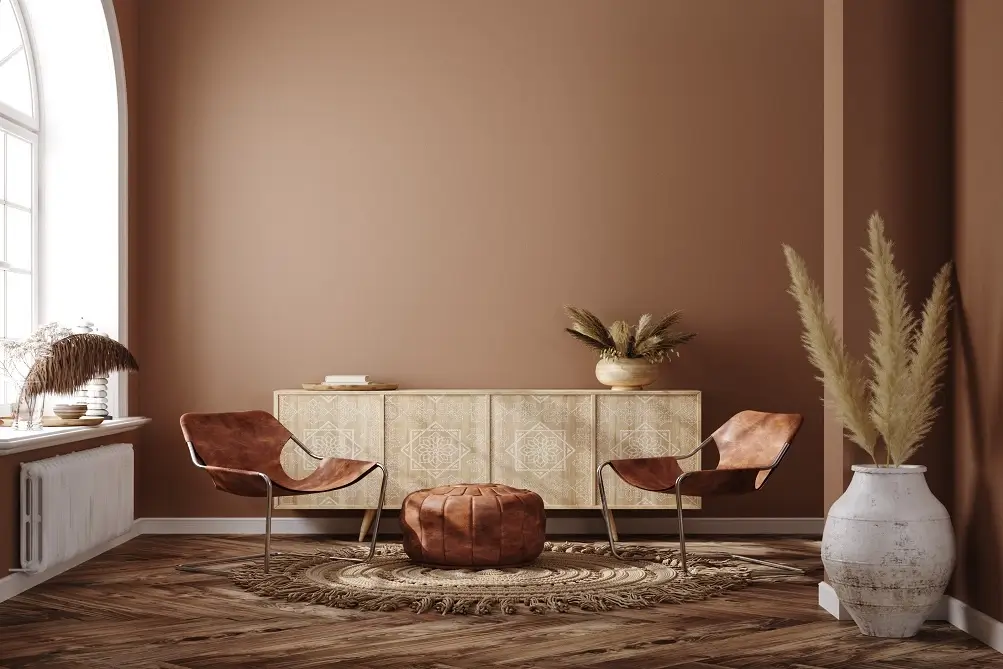Believe it or not, painting your house is never as simple as brushing colour over your walls. The type of paint you use will impact the result you get. Hence, you need to consider multiple aspects such as the cost, the kind of finish you want and the longevity before investing in the paint.
Today, we’re going to compare emulsion and distemper paint and discuss their pros and cons.
What Are They?
Emulsion Paints
They are water-based paints that are infused with acrylic or vinyl resins. The addition of the resins makes the paint durable against wear and tear. One can identify the amount of resins present in the product by analyzing its sheen. The three types of emulsions are as follows:
Matte
As the name suggests, this type of emulsion has no sheen and results in a smooth, non-reflective finish.
Satin
One will notice a soft sheen with this emulsion paint. Due to the larger amount of resins present, this variation of paint is more durable than the Vinyl Matte.
Silk
This type of emulsion is noted for its durability and glossy sheen which are superior to its alternatives.
Distemper Paint
Distemper paint is known as one of the earliest forms of paint. It is created from a combination of lime, pigment, chalk, water and animal glue. The animal glue mentioned here contains resins and caseins, which increase the durability of the paint. You can find both oil-based and water-based distemper colours available in the market today. This product can be further classified into two types based on their distinct properties.
Acrylic Distemper Paint
Containing more than 1000 variations, these distemper colours provide one with a relatively smooth matte finish. These paints are also credited with the fastest drying time.
Synthetic Distemper Paint
The distempered colours within this category provide one with a relatively uniform matte finish. You can also remove the dust from the paint with a wet cloth.
What Are the Advantages Of the Emulsion and Distemper Paints?

Emulsion Paints
They are water and chemical resistant.
You can use them easily due to their thickness.
The paints are durable and can last for few years.
You can apply them to papered walls and wooden furniture.
As these paints are resistant to water, they are easier to clean.
Distemper Paint
It can be applied directly on cement.
Distemper paint is cheaper than other alternatives.
The paint does not dry or crack in the sunlight.
What Are the Disadvantages of the Emulsion and Distemper Paints?
Emulsion Paint
The paints are relatively expensive.
They take a longer time to dry.
They cannot be applied directly to the cement and require quotes of primer and putty first.
There are a limited number of shades and colours available.
Distemper Paints
They cannot be washed/ cleaned often.
These paints have a lesser life span.
The colours fade faster than that of the emulsion paints.
They have a distinct smell.
The finish isn’t as smooth as other alternatives.
The distemper paint colour will peel off when wet.
What Is the Spread ability of The Paint?

Emulsion Paint
You can paint roughly 14 square meters with 1 litre of emulsion paint.
Distemper Paint
If you’re using oil-based paint, you’ll require 1 kg for 10 square meters. On the other hand, if your distemper paint colour is water-based, then you can cover around 14 square meters with 1 kg of paint.
What is the type of finish you get?
Emulsion Paint
Due to its ingredients, you will achieve a smooth finish with emulsion paint. Additionally, the Satin and Silk paints will also provide you with a soft shine.
Distemper Paint
This type of paint will provide you with a textured finish and give off a rustic feel. That said, if presented with the right base, the paint can be smoothed out.
Where Should You Use the Paint?

Exterior Emulsion Paint And Interior Emulsion Paint
Because of its thickness and ability to withstand chemicals and water, you can paint the exterior of the house with emulsion paints. In terms of the interiors emulsion paint, opt for painting the ceilings. It is also a great choice for rooms that frequently need to be washed and/or wiped down, such as the bathroom or kitchen.
Distemper Colour for Walls
We recommend using distemper colours for walls that aim for a rustic feel.
Due to its ability to withstand sunlight, you can also use this paint for open area rooms such as the living room. You can also find a large variety of bedroom distemper colours available for your accent walls.
Emulsion and distemper paint both come with their own set of pros and cons. It is up to you to pick which type suits you the best. We recommend doing more research on these paints as well as other kinds of paints so that you can make an informed decision.
Also Read


